初等部
R6 サイエンスフェア・2024 Grades 3-6 Science Fair
3学年:サイエンスフェア
今年の実験のひとつで、3年生たちは、車に当たる風の力を変えたときに車の進む距離がどのように変わるかを調べました。児童たちは、風力で進む車を自分たちで設計することに挑戦しました。紙皿や薄いプラスチックシートなど、風力で進む車の帆になるようなさまざまな素材を使いました。ゴールまで最速で到達すること、あるいは最も遠くまで進むことが課題となっていました。
各クラスの競技会は、理科教師の監督のもと、3月21日に理科室で行われました。クラスは3〜4人で9つのグループに分けられました。第1ラウンドでは、子どもたちはグループ毎に対戦しました。その勝者が次のラウンドに進みました。同様に、第2ラウンドの勝者は最終ラウンドに進みました。上位3チームには賞状、小さなトロフィー、そしてメダルが授与されました。どの児童にとっても、最高の風力で進む車を作ることを通して、素晴らしい学びとなりました。
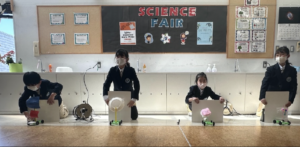
In one of this year’s experiments, G3 students investigated how a car’s distance changed when the force of the wind hitting it was altered. Consequently, the students were tasked with designing their wind-powered cars. They utilized various materials such as paper plates, thin plastic sheets, and other suitable materials for constructing sails for their wind-powered vehicles. They were reminded that their cars should be the fastest to reach the goal or travel the farthest distance.
The competition for each class took place on March 21st in Science Room 2 under the supervision of the Science teachers. The class was divided into 9 groups, each comprising 3-4 members. In the first round, students competed within their respective groups, with the winners advancing to the subsequent round. Similarly, winners of the second round progressed to the final round. Certificates, small trophies, and a medal were awarded to the top three winners, acknowledging their exceptional efforts in creating their best wind-powered cars.
4学年:サイエンスフェア
4年生たちは、家庭や学校にあるリサイクル材料を使って、自分たちのおもちゃを作ることに挑戦しました。ただし、作ったおもちゃの背景にある理科的な考え方を説明できなければなりません。これらのコンセプトはすべて、3学年と4学年で学んだ授業から得たものとなります。ほとんどの児童が、磁石、電気、空気圧、星座を使ったおもちゃを考え出しました。サイエンスフェアの最終日には、クラスで遊ぶ機会を設け、自分たちが作ったおもちゃで楽しむことができました。最後に、全員の努力と頑張りを称え、賞状が授与されました。
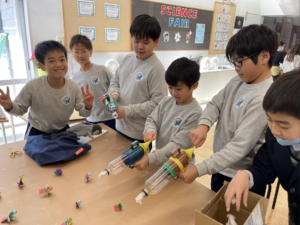
G4 students were challenged to create their toys using recycled materials available at home or school, while also being able to explain the scientific concepts behind their creations. These concepts were drawn from their lessons in both G3 and G4. Most students devised toys involving magnets, electricity, air pressure, and constellations. On the final day of the Science Fair, they played with the toys they had created as a class. Finally, each participant received a certificate of achievement, recognizing their dedication and hard work.
5学年:サイエンスフェア
3月の第2週、理科の授業中に、電磁石コンテストの3回戦を行いました。これは、5学年理科で学んできたことを生かすプロジェクトベースの学習です。多くのグループが、コイルにまいた回数が電磁石の強さに直接影響することに気づきました。 「電磁石は、ワイヤーのコイルにある巻いた数が多ければ多いほど、あるいは電流が多ければ多いほど、強くなる」という重要な概念です。今年の最高記録は、制限時間内でひきつけたクリップの数が11,047個でした!
皆さん、大変よくがんばりました!
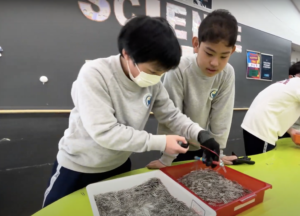
During the second week of March, we conducted three rounds of the electromagnet competition during the students’ science classes. This served as the culminating project-based assessment for Grade 5 Science. Many groups observed that the number of loops directly impacted the strength of the electromagnet. A key concept emerged: an electromagnet’s strength increases with more loops in the wire coil or higher current flow. This year’s highest record stands at 11,047 paper clips! Congratulations to all participants!
6学年:サイエンスフェア
3年生の頃から電気について次のような学習をしてきました。回路とは何か、直列・並列つなぎについて、ワイヤー接続が反転したときにモーターがどのように回転するか、電磁石についてなどです。 6年生では、コンデンサについても学びました。その集大成として、児童は3学年え学習したような、リサイクル素材や電動工具などを利用して、学んできたことを生かす学習活動をおこないました。賞状やメダルがもらえなかったとしても、限られた時間、知識、リソースの中であっても、最後まで課題に取り組み貴重な体験となったと思います。子ども達は、リサーチすることから新しいことを学び、一生懸命に取り組むことで、自分達の作品を徐々に改良していくことができることを実感できたと思います。
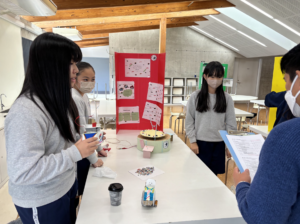
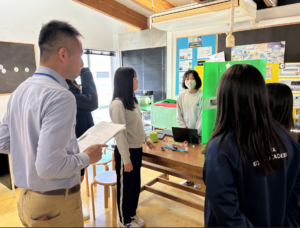
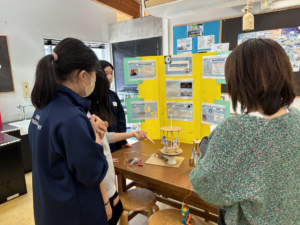
Since Grade 3, students have been studying electricity, learning about circuits, series and parallel connections, motor rotation through wire reversal, and electromagnets. In Grade 6, they delved into condensers. As a culminating activity, we allowed students to apply their Grade 3 knowledge using recycled materials, electrical tools, and items from the science room. While medals and certificates were awarded, we value the invaluable experience of perseverance, knowledge acquisition, and resourcefulness the most. As science progresses through research and hard work, students learn that their early designs can always be improved.

